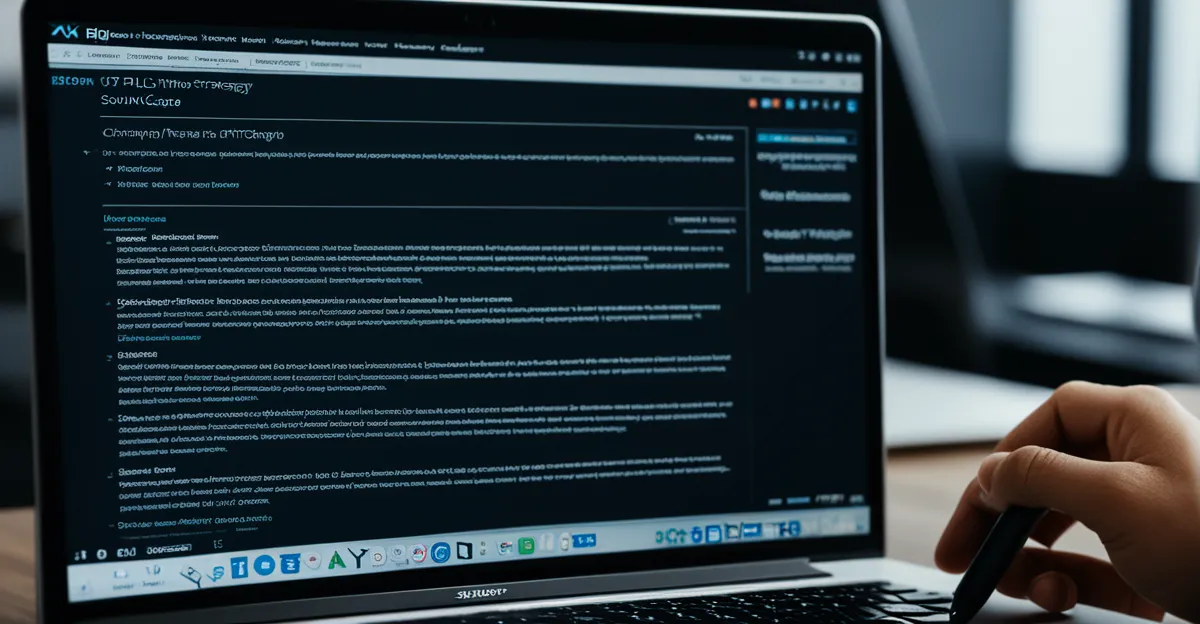Choosing the right PLM software reshapes how your business manages product data, accelerates innovation, and improves collaboration across teams. It integrates crucial workflows from design to retirement, offering real-time insights that enhance decision-making and reduce costs. Understanding PLM’s capabilities helps companies stay competitive, adapt to market demands, and ensure a seamless product lifecycle from concept to customer delivery.
Core Concepts of Product Lifecycle Management Software
Product Lifecycle Management (PLM) software serves as an enterprise backbone, connecting every stage from concept to market withdrawal. Through a central digital hub, PLM coordinates requirements, design, manufacturing, service, and even retirement—ensuring data accuracy and secure access for teams across locations. For more on building business efficiency with the right platform, this page explains it in detail: Continue your reading.
Also to discover : Unlocking sustainability with effective plm software solutions
Unlike traditional Product Data Management (PDM) systems, which focus mainly on storing and versioning CAD files or engineering documents, PLM software integrates these data management features while also orchestrating workflows, compliance, changes, and collaboration. The distinction is essential: PDM addresses isolated engineering files, whereas PLM supports organization-wide decision-making, traceability, and lifecycle optimization.
PLM’s core functions include:
In parallel : Top plm software options to elevate your business strategy
- Centralized product data management
- Secure version control and role-based access
- Automated workflow management
- Real-time cross-functional collaboration
- Lifecycle traceability from ideation to recycling
Key benefits of sound PLM deployment:
- Boosted engineering efficiency via shared knowledge and automation
- Early error detection, which reduces costly waste
- Acceleration of time-to-market through unified, always-available data
- Enhanced compliance and quality by automating part structures and processes across global sites
Modern PLM is increasingly cloud-based and AI-enabled, meeting the needs of distributed teams, supply chains, and data-driven innovation. By integrating digital twins, IoT, and real-time feedback, PLM not only lowers development costs but also helps companies deliver higher-quality products with transparency and agility.
Advanced Features, Key Vendors, and Industry Applications of PLM Software
Modern best lifecycle management platforms leverage AI, IoT, digital twins, workflow automation, and advanced security. These features accelerate product development, link physical and digital assets, and enable smart data flow between design, engineering, and manufacturing. Leading top PLM systems comparison reveals that most solutions prioritize integration with real-time data analytics, machine learning, and mobile access, enhancing usability for global teams. Security remains robust, including encryption for sensitive product data and governance for lifecycle management.
A top PLM systems comparison highlights Siemens lifecycle software solutions, Teamcenter software features, Windchill system capabilities, SAP product lifecycle modules, and Oracle Agile lifecycle solutions. Siemens lifecycle software solutions and Teamcenter software features stand out for deep CAD integration and digital thread support. Windchill system capabilities enable scalable deployment and broad supply chain integration. SAP product lifecycle modules allow seamless ERP collaboration, while Oracle Agile lifecycle solutions drive project control. Each platform adapts well to industry-specific lifecycle software needs.
Industry-specific lifecycle software transforms sectors like manufacturing, fashion, aerospace, automotive, and retail. For instance, best lifecycle management platforms automate apparel product management and support complex manufacturing PLM applications. PLM collaboration with suppliers strengthens compliance tracking and shortens time to market, addressing dynamic product requirements across various industries.
Implementation, Integration Challenges, and Future Trends in PLM Adoption
Best practices for PLM software implementation and change management
Early clarification of PLM software implementation strategies is essential for success. Secure executive support and involve key stakeholders from engineering, supply chain, and IT to champion the rollout. Prioritize data quality and user training for smooth adoption, while establishing feedback loops to adapt workflows. For highly regulated industries, document every step of change management to maintain compliance and build trust across cross-functional teams. Consider lifecycle software scalability options to ensure the system adapts to evolving business needs—modular architecture often supports phased rollouts.
Integrating PLM with ERP, MES, CAD, and other enterprise systems for digital transformation
Effective integration of PLM with ERP systems like SAP or Oracle drives seamless handoff of engineering data to manufacturing and procurement. Align PLM data models to enterprise standards, minimizing manual re-entry and reducing costly errors. Digital product development software should enable bi-directional connections with CAD and MES platforms, keeping the digital thread unbroken from concept through production. This integration enhances agility for global product launches and ongoing iteration.
Trends: SaaS/cloud PLM, digital threads/twins, sustainability, AI integration, and market outlook
Cloud-based product lifecycle tools are making robust PLM accessible for both large enterprises and startups, supporting distributed teams and rapid scaling. AI-powered PLM analytics and reporting tools now deliver actionable insights, while digital twins—supported by IoT integration—offer virtual representations of products to optimize performance and sustainability over time. Emerging PLM adoption case studies demonstrate significant gains in efficiency, compliance, and speed, especially when organizations implement adaptable lifecycle software scalability options and collaborative platforms for supply chain management.









